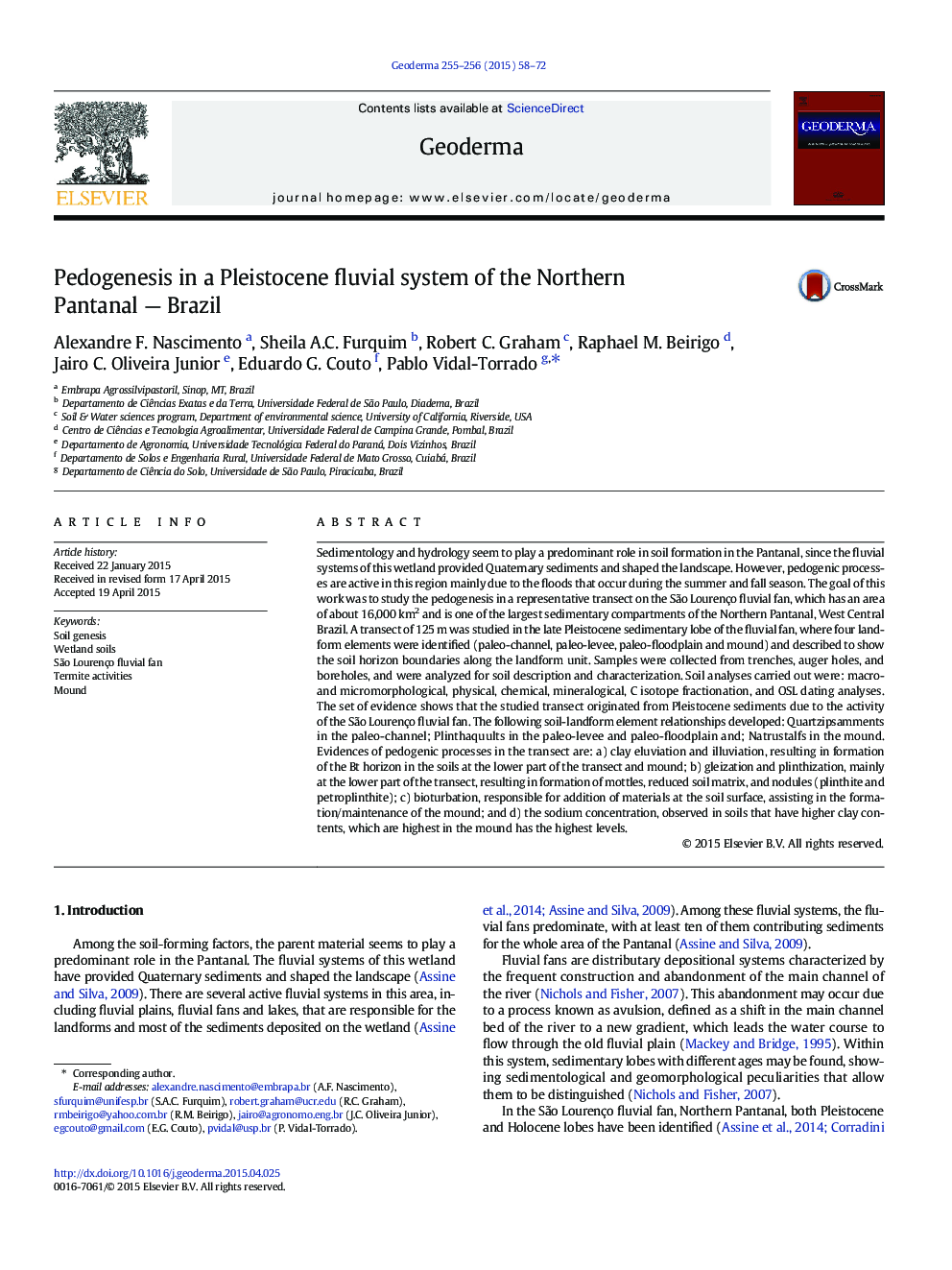| کد مقاله | کد نشریه | سال انتشار | مقاله انگلیسی | نسخه تمام متن |
|---|---|---|---|---|
| 4573146 | 1629458 | 2015 | 15 صفحه PDF | دانلود رایگان |

• Pleistocene landforms of fluvial fans have been eroded in Nothern Pantanal.
• The influence of the depositional system on soil distribution in the Pantanal is remarkable.
• The Pleistocene/Holocene erosion of landforms changes noticeably the hydrology and the soil formation processes.
• Mound formation or maintenance has strong contribution of the termite activity.
• The soil–landscape relationships are complex and require a suitable approach.
Sedimentology and hydrology seem to play a predominant role in soil formation in the Pantanal, since the fluvial systems of this wetland provided Quaternary sediments and shaped the landscape. However, pedogenic processes are active in this region mainly due to the floods that occur during the summer and fall season. The goal of this work was to study the pedogenesis in a representative transect on the São Lourenço fluvial fan, which has an area of about 16,000 km2 and is one of the largest sedimentary compartments of the Northern Pantanal, West Central Brazil. A transect of 125 m was studied in the late Pleistocene sedimentary lobe of the fluvial fan, where four landform elements were identified (paleo-channel, paleo-levee, paleo-floodplain and mound) and described to show the soil horizon boundaries along the landform unit. Samples were collected from trenches, auger holes, and boreholes, and were analyzed for soil description and characterization. Soil analyses carried out were: macro- and micromorphological, physical, chemical, mineralogical, C isotope fractionation, and OSL dating analyses. The set of evidence shows that the studied transect originated from Pleistocene sediments due to the activity of the São Lourenço fluvial fan. The following soil-landform element relationships developed: Quartzipsamments in the paleo-channel; Plinthaquults in the paleo-levee and paleo-floodplain and; Natrustalfs in the mound. Evidences of pedogenic processes in the transect are: a) clay eluviation and illuviation, resulting in formation of the Bt horizon in the soils at the lower part of the transect and mound; b) gleization and plinthization, mainly at the lower part of the transect, resulting in formation of mottles, reduced soil matrix, and nodules (plinthite and petroplinthite); c) bioturbation, responsible for addition of materials at the soil surface, assisting in the formation/maintenance of the mound; and d) the sodium concentration, observed in soils that have higher clay contents, which are highest in the mound has the highest levels.
Journal: Geoderma - Volumes 255–256, October 2015, Pages 58–72